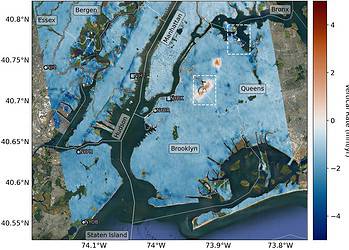Some simple questions have deceivingly complicated answers.

Credit: Murata K. et al., PNAS, October 17, 2016
If you’ve ever touched ice, then you know the surface is wet. Even when the temperature is well below the freezing point, the outer layers of ice are still wet, as if they were melting. So how can this be?
The mystery has puzzled scientists for over 150 years, when Michael Faraday mentioned it as a strange phenomenon. Now, a team of Hokkaido University scientists might have figured out the answer. They believe the key is something called quasi-liquid layers, or QLLs.
Thin liquid water layers, QLLs, exist on ice surfaces just below the melting point (0 °C) but they are unable to form in perfect equilibrium, researchers found. QLLs have attracted significant scientific interest as their formation governs various important phenomena on Earth, such as weather and environment-related issues, winter sports, etc. In their search to explain how these layers form, researchers developed and used a special microscope with Olympus.
“Our results contradict the conventional understanding that supports QLL formation at equilibrium,” says Ken-ichiro Murata, the study’s lead author at Hokkaido University. “However, comparing the energy states between wet surfaces and dry surfaces, it is a corollary consequence that QLLs cannot be maintained at equilibrium. Surface melting plays important roles in various phenomena such as the lubrication on ice, formation of an ozone hole, and generation of electricity in thunderclouds, of which our findings may contribute towards the understanding.”
Their research also revealed an intriguing phenomenon: QLLs are absent at equilibrium, they only form when the surface of ice is growing or sublimating, under supersaturated or unsaturated vapor conditions. In the end, a model was also proposed to explain how these layers form, contributing to our understanding of other crystalline surfaces, too.
“We propose a simple but general physical model that consistently explains these aspects of surface melting and QLLs. Our model shows that a unique interfacial potential solely controls both the wetting and thermodynamic behavior of QLLs.”
Journal Reference: Ken-ichiro Murata, Harutoshi Asakawa, Ken Nagashima, Yoshinori Furukawa, Gen Sazaki. Thermodynamic origin of surface melting on ice crystals. Proceedings of the National Academy of Sciences, 2016; 113 (44): E6741 DOI: 10.1073/pnas.1608888113






